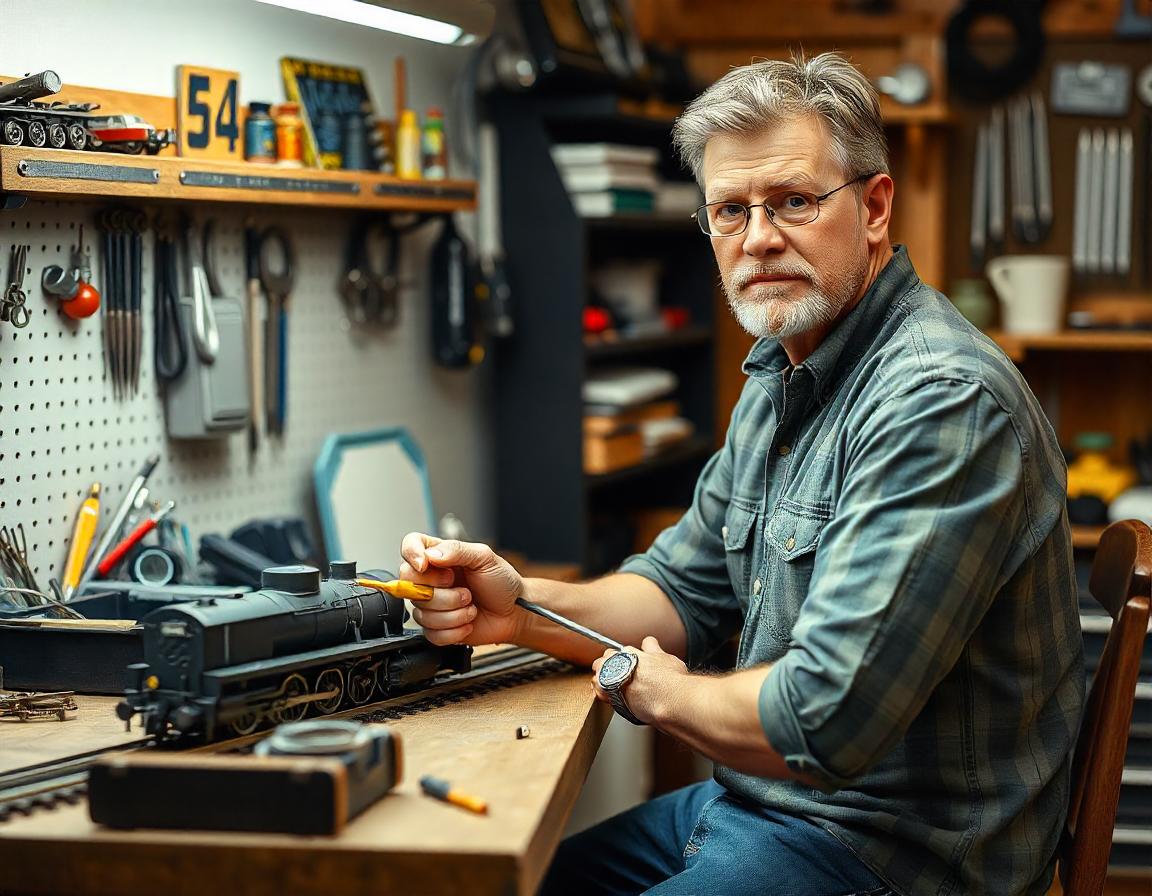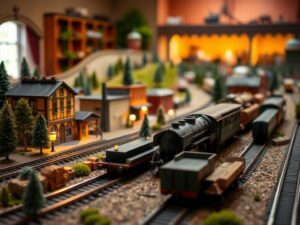
Replacing HO Scale Train Wheels
Step-by-Step Guide to Replacing HO Scale Train Wheels
Let’s face it, our beloved model trains, those tiny iron horses that bring us so much joy, sometimes need a little TLC. And just like real locomotives, wear and tear can affect their performance, particularly the wheels.
Bent axles, worn-out tires, or misaligned flanges can cause derailments, stalling, and even damage to your track. The good news is, replacing HO scale train wheels is a relatively simple task that every hobbyist can master with the right tools and knowledge. This guide will walk you through the entire process, from diagnosis to successful completion, helping you keep those trains rolling smoothly for years to come.
Why Replace Train Wheels?
Before we get our hands dirty, let’s understand why wheel replacement is crucial. Just like real train wheels experience wear and tear, model train wheels face similar issues. Here are some telltale signs itâs time to consider a replacement:
- Derailments: Frequent derailments, especially in curves or on straight track sections, often point to poorly aligned or worn-out flanges.
- Stalling: If your engine struggles to move, especially uphill or with a heavy load, wheel wear or axle binding could be the culprit.
- Track Wear: Deep grooves or unusual damage to your track may indicate overly worn or rough wheels leaving their mark.
The Right Tools for the Job:
Having the right tools on hand makes the replacement process much easier and more efficient. You’ll need:
- Hobby knife: This will help remove any excess glue or plastic when detaching wheels from the chassis.
- Fine-tipped pliers (needle nose): Essential for handling small components like wheel axles and adjusting flanges.
- Super glue or epoxy: Use a quality model railroad adhesive for strong bonding between the wheels and axles.
- Sandpaper (fine grit): Use this to smooth any rough edges on the wheel treads or axles.
- Replacement Wheels: Make sure you choose wheels compatible with your specific train type and scale (HO).
- Tweezers: Helpful for holding small parts and removing stubborn debris.
The Step-by-Step Guide:
1. Examination and Identification:
Begin by thoroughly examining your train. Identify the problem wheel(s) â note if it’s a locomotive wheel, tender wheel, or car wheel. Measure the diameter of the wheel tread to ensure compatibility with replacements. You can often find this information printed on the original wheels or in your train’s documentation.
2. Removing the Existing Wheels:
Gently remove any plastic or metal coverings (usually clips or screws) securing the wheels to the truck frame. If there is glue holding the wheels, use a hobby knife and/or warm water to carefully dissolve it.
Be cautious not to damage the wheel axle or the truck itself. Sometimes the wheels will simply pull off after removing the retaining components. If not, you might need to carefully pry them loose with your pliers â be extra gentle!
3. Cleaning Up the Tracks:
With the old wheels removed, thoroughly clean the truck axles and wheel wells using a brush or compressed air. Remove any dirt, grime, or dried adhesive that may hinder smooth rolling of new wheels.
4. Preparing the New Wheels:
Before installation, inspect your replacement wheels for any defects or misalignments. If necessary, lightly sand down any rough edges on the tread or flanges using fine-grit sandpaper. Ensure the axles slide freely through the wheel center hubs.
5. Installation and Alignment:
Apply a thin layer of super glue (or epoxy if required) to the inside of the new wheel’s hub. Carefully slide the wheel onto the axle, making sure it’s positioned correctly. Secure the wheel by placing the plastic covers or screws back into place (if applicable). Use your fine-tipped pliers to adjust any flange positions if necessary â this ensures optimal performance on curves and straight track.
6. Final Inspection and Testing:
Double-check that all new wheels are securely in place and free of obstruction. Gently turn the train’s wheels to confirm smooth rotation. Perform a test run on your layout to ensure proper alignment, functionality, and derailment prevention.
Expert Insights for Perfect Replacement:
- Lubrication: Apply a tiny amount of hobby-specific wheel lubricant to the axles to reduce friction and wear.
- Wheel Gauge Check: Use a gauge tool (available at hobby shops) to check if your wheels align properly with your track’s gauge width. Misaligned wheels can lead to constant derailments.
Replacing HO Scale Wheels – Additional Tips:
- When purchasing replacements, look for quality wheels made from durable materials like nickel-silver or brass for longer life.
- Don’t forget to clean your track regularly! Removing dust and debris prevents excessive wheel wear in the first place.
- Join your local model railroad club or online forums to connect with experienced hobbyists who can offer invaluable advice and assistance.
Remember, patience and attention to detail are key when replacing HO scale train wheels. By following this step-by-step guide, you’ll have your trains back on track in no time! Keep experimenting, sharing your experiences, and most importantly, enjoy the fascinating world of model railroading! Happy Railfanning!





